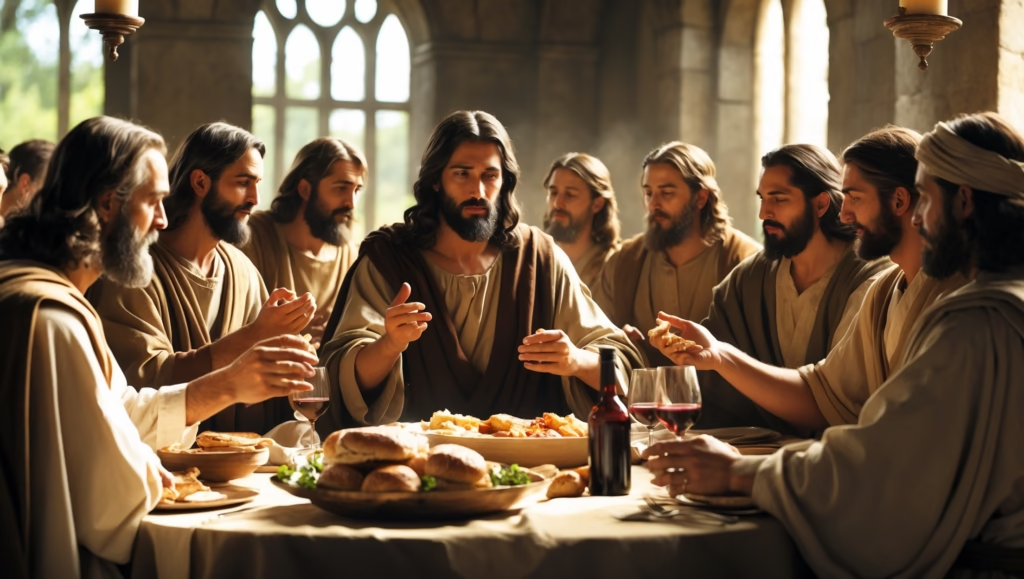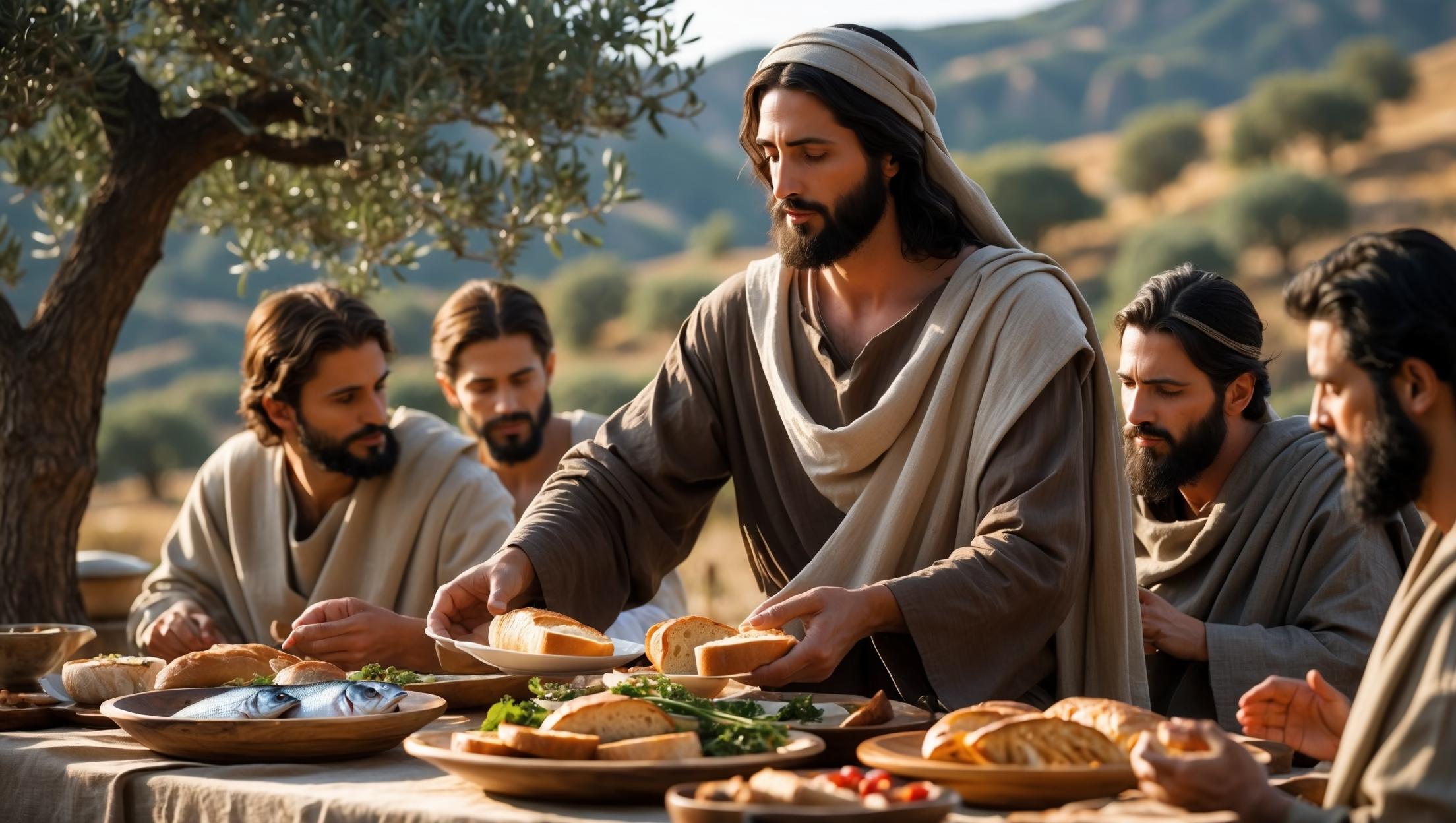Understanding Jesus Through Diet
When we study Jesus, we often focus on His teachings, miracles, and parables, but the foods He ate and referenced provide valuable insight into His daily life, cultural context, and theological symbolism. Food in first-century Judea was more than sustenance; it was social, ritual, and symbolic. By analyzing the culinary references in the Gospels, we can reconstruct Jesus’ diet, uncover deeper theological meanings, and explore how meals shaped His ministry.

Dietary Staples in Jesus’ Time
Jesus’ diet reflected the practical realities of Galilean life, emphasizing locally available, seasonal, and economical foods:
- Barley Loaves (John 6:9)
Barley bread was considered the food of the poor, inexpensive and filling. In the feeding of the 5,000, Jesus multiplied five barley loaves, symbolically providing for physical needs while pointing to spiritual abundance. - Fish (Luke 24:42; John 21:9)
Fish from the Sea of Galilee, likely sardines or tilapia, were a staple protein source. These small fish were accessible to ordinary people and often preserved by drying or salting. Fish also carried symbolic weight, later becoming a Christian emblem (Ichthys). - Figs (Mark 11:13)
Figs were nutritionally rich and widely consumed. In the fig tree incident, the barrenness of the tree provided a powerful teaching moment about fruitfulness, linking diet with moral and spiritual lessons. - Other Foods
Olives, grapes, lentils, and herbs were also common, forming a Mediterranean diet that balanced carbohydrates, protein, and fats. These foods were often tied to ritual observances and feasts.
Meal Theology: Symbolism and Ritual
Food in the Gospels is never purely about sustenance; meals carried profound theological and ritual significance:
- The Last Supper
Jesus’ final meal with His disciples incorporated deeply symbolic foods:
- Bitter Herbs: Recalling the Israelites’ slavery in Egypt and connecting the Passover to deliverance.
- Bread and Wine: Establishing a covenantal ritual, with Eucharistic echoes in Christian liturgy.
- Wine Content Debate: Scholars discuss whether wine was diluted with water, reflecting moderation and ritual practice.
- Post-Resurrection Breakfast (John 21:9-13)
Jesus prepares a charcoal fire breakfast for His disciples by the Sea of Galilee. This simple meal of fish and bread demonstrates His continued relational ministry and provides Eucharistic symbolism, linking daily sustenance with spiritual nourishment. The charcoal fire may also symbolically reference sacrifice, purification, and divine presence.
Social and Cultural Dimensions of Food
Meals in first-century Judea were social events, often shaping community, hospitality, and inclusion:
- Shared Meals: Jesus frequently dined with tax collectors, sinners, and outsiders, using food to bridge social divides.
- Ritual Purity: Certain foods and meal practices highlighted tensions between purity laws and inclusive ministry.
- Hospitality as Ministry: Providing food reinforced relational and spiritual teaching, showing that sustenance and community were inseparable.
Modern Applications and Legacy
Jesus’ culinary references continue to inspire contemporary practice and thought:
- Biblical Diet Trends
Some Christians explore first-century dietary patterns for nutritional and spiritual insights, including Mediterranean-style eating and fasting practices based on Gospel narratives. - Communion Food Authenticity Movements
Churches and religious organizations experiment with using barley loaves or locally sourced wine to connect modern worshippers with historical practices, enhancing the sensory and ritual experience of the Eucharist. - Cultural and Social Implications
Understanding Jesus’ food choices enriches discussions on social justice, access to nutrition, and hospitality in ministry, highlighting the Messiah’s attention to both physical and spiritual needs.
Key Insight: Food as Theology
Food references in the Gospels reveal that Jesus’ ministry was deeply incarnational, engaging with ordinary human life while imbuing it with theological significance. From barley loaves to post-resurrection fish breakfasts, meals served as teaching tools, ritual markers, and expressions of inclusion. By studying what the Messiah ate and how He shared meals, we gain a fuller understanding of His ministry as relational, symbolic, and profoundly human.








